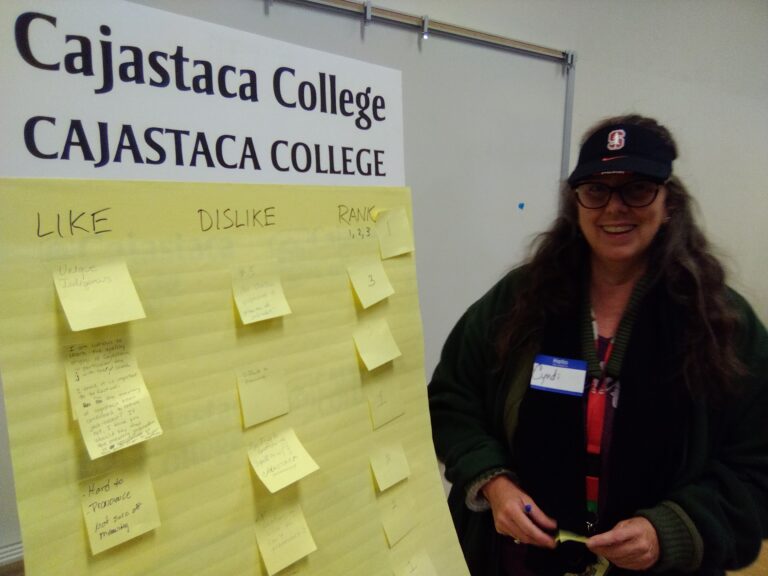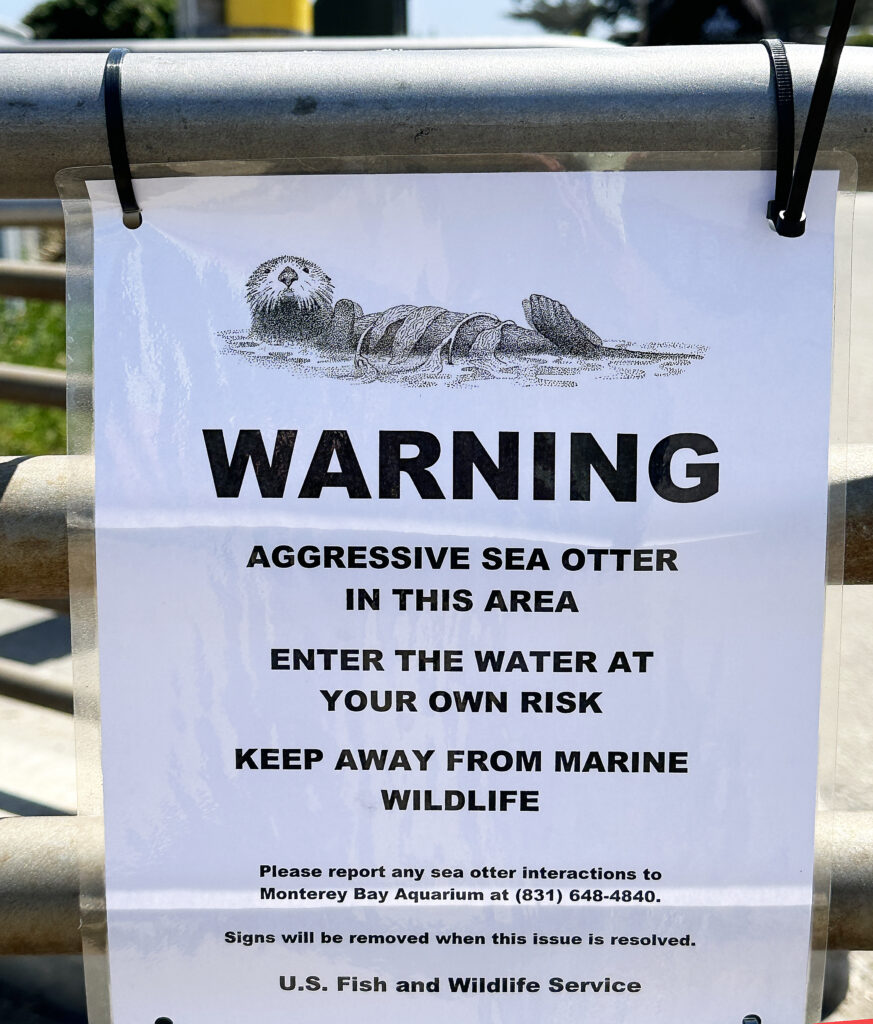DISCLAIMER: Please note there is some strong language in this story describing a school shooting scenario.
A voice rings out over the handheld radio: “Numerous callers reporting gunfire in the middle school gym.”
With that, the first active shooter scenario of the afternoon kicks into gear.
On July 14, at the San Lorenzo Valley Unified School District tri-campus, the Santa Cruz County Sheriff’s Office continued its week-long active shooter training.
Volunteers cry for help and banged on walls, simulating a mass casualty event.
“We are now getting reports of multiple injuries,” a woman says over the airwaves.
Firefighters, deputies and police swarm up the outdoor steps, bark orders and tend to victims.
Within moments the threat is neutralized.
The trainees deal with the fallout: wailing patients simulating traumatic injuries, disoriented people wandering the wrong way, professionals from various agencies navigating the chain of command.
A thick red substance sourced from a mannequin dealer was everywhere, including on the first responders assisting patients.
“They’re gonna get blood on their hands,” says Lt. Nick Baldrige, of the Sheriff’s Office, from outside the yellow caution tape.
Even though there was no firearm-toting criminal in the SLVMS gymnasium, there was plenty that felt real about the scenario.
Painful Precursors
Here in the Santa Cruz Mountains, the threat of gun violence is anything but imaginary.
An alumnus of this very campus, Alex Fritch, was slain during the VTA rail yard shooting in San Jose in 2021.
Sgt. Damon Gutzwiller, another SLVHS grad, was killed the year prior in Ben Lomond. Gutzwiller was ambushed with gunfire and improvised explosive devices by an ex-Air Force sergeant, Steven Carrillo, in Ben Lomond.
In 2019, three people were killed and 17 others injured by a gunman at the Gilroy Garlic Festival, 40 miles to the east.
Last week, two people suffered gunshot wounds near Freedom Elementary School, in Watsonville.
The day of the training, there was a contingent of law enforcers armed with live ammunition along the perimeter of the drill area at SLVUSD’s campus. They were on-hand to keep the public out and in case something more serious occurred.
During last year’s active shooter training at Scotts Valley High School, one actor made a comment that was interpreted as a potential threat, which turned the professional development session into an hours-long hunt for possible danger.
The silver lining to that disruption: it proved quite the learning experience.
“We got to see firsthand how well different agencies can come together, quickly establish command and mitigate a threat,” Scotts Valley Police Department Capt. Jayson Rutherford says. “It also increased our security measures at the training site and our screening procedures for role players.”
According to Rutherford, that incident wasn’t the reason for the venue change.
“We wanted officers to experience a different location to respond to,” he says, noting all SVPD patrol staff and detectives signed up this year.
Local Protocol
Lt. Baldrige explains that getting all the players some practice working together ahead of a critical incident is crucial.
“The faster we can provide treatment, the more lives are gonna be saved,” he says, noting there were 24 volunteers in attendance Friday. “This has evolved, just as law enforcement’s response to mass shootings has evolved.”
Around the time of the 1999 Columbine High School massacre, police were taught to follow the surround-and-call-out model, where law enforcers create a perimeter and attempt to contact the suspect with the help of tactical officers.
A Colorado commission recommended a change in practices, where the initial responders are sent into harm’s way more quickly.
“There was a transition,” Baldrige says of the move away from surround-and-call-out. “It was the tactic they had at the time, because this wasn’t really a thing pre-Columbine on the level we have now.”
According to Pew Research Center data, there were three active shooter incidents (categorized by the FBI as “one or more individuals actively engaged in killing or attempting to kill people in a populated area”) in 2000; that rose to 61 in 2021.
Locally, active shooter training began in 2013, with Nathan Manley, a campus police officer at UC Santa Cruz, heading it up.
Manley now works in the private sector in Silicon Valley, but his mass violence response organization (IMVR Group) has been providing consulting services to the Sheriff’s Office, which took the reins this year.
For a while, the “diamond formation” was the go-to technique, says Baldrige.
“You would have a person in the front, a flank on each side and then a rear guard,” he says. “You’d need four (officers) to be able to move that way.”
This presented problems for rural locales like Felton.
“You think about using this as a scenario—the San Lorenzo Valley—it could take a little bit to get that fourth person here,” he says. “If you’re having to wait … we’re losing lives. And so now it’s transitioned into: You hear gunfire, you go towards gunfire. And you try to neutralize that threat as quickly as possible.”
There’s been a shift in how firefighters respond to active shooters, too—moving away from a more passive role during the early moments of a response.
“Historically, we ‘staged’ for incidents where there was any sort of threat,” says Zach Ackemann, deputy director of IMVR Group. “However, we realized, in recent years, that there was a need to get advanced care to the patients as soon as possible.”
Authorities note that if a call has already been designated an active shooter situation, the question of whether deadly force can be used or not is moot.
“You do not have to wait for someone to shoot at you first, I will tell you that,” Escalante says.
He explains lethal measures can be employed if there’s an immediate threat of death or serious injury, or if a fleeing felony suspect is believed to be likely to kill or maim someone.
Coordination & Action
While last year’s event, held just days after the Texas school shooting in Uvalde, hosted attendees from 40 different agencies from far and wide—including personnel from UC Berkeley, UC Davis and Sonoma State—this time, training efforts were focused more on providing comprehensive studies for local officials.
By Friday that meant at least 435 participants—police officers, firefighters and medical personnel—had gone through the classes, which included sessions for hospital staff and dispatchers.
Andrew Dally, the Capitola Police Department chief, says from his perspective active shooter training must continue to happen annually, at a minimum.
“In incidents such as an active shooter, multiple agencies from this region will respond,” he says. “These officers will have to work together, and having this type of training allows us to train together—and with similar tactics—which will provide the path for future coordinated responses.”
Chief Escalante points out that active shooter training actually came in handy last October when a report of “shots fired” came in from Santa Cruz High School—which, thankfully, turned out to be a hoax.
“We didn’t hesitate,” he says. “Multiple officers went in as soon as they arrived.”


























